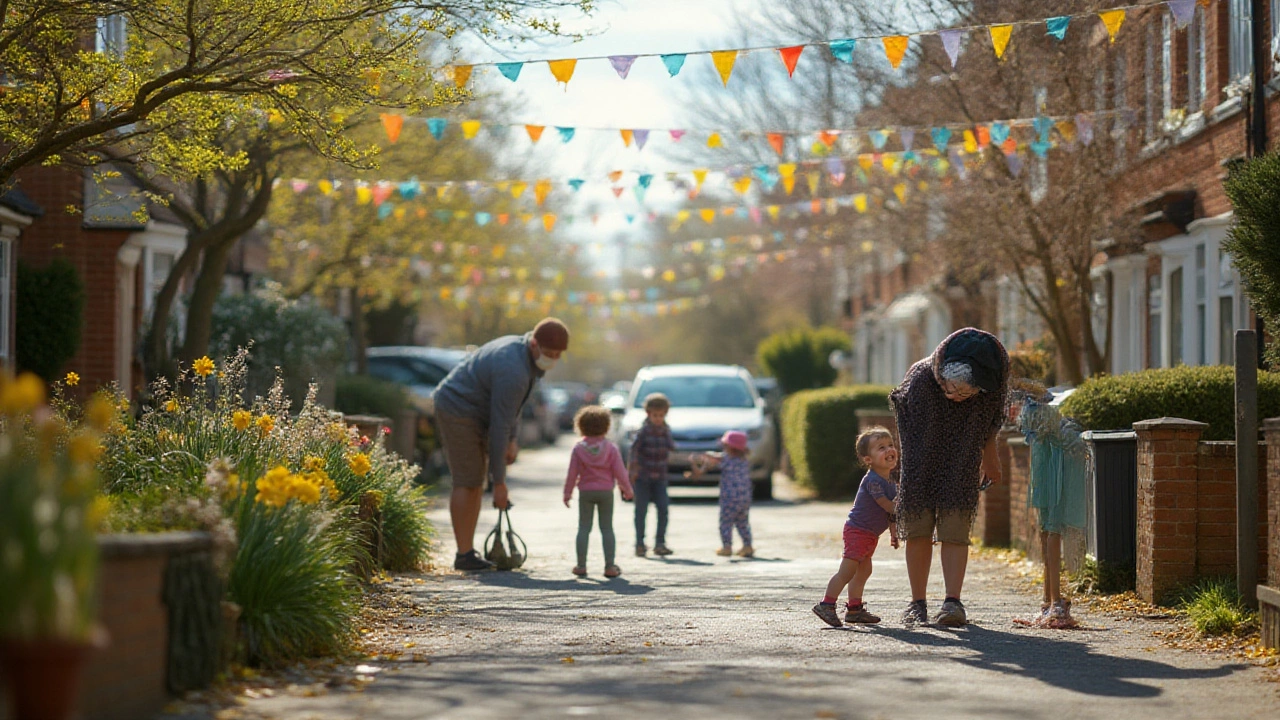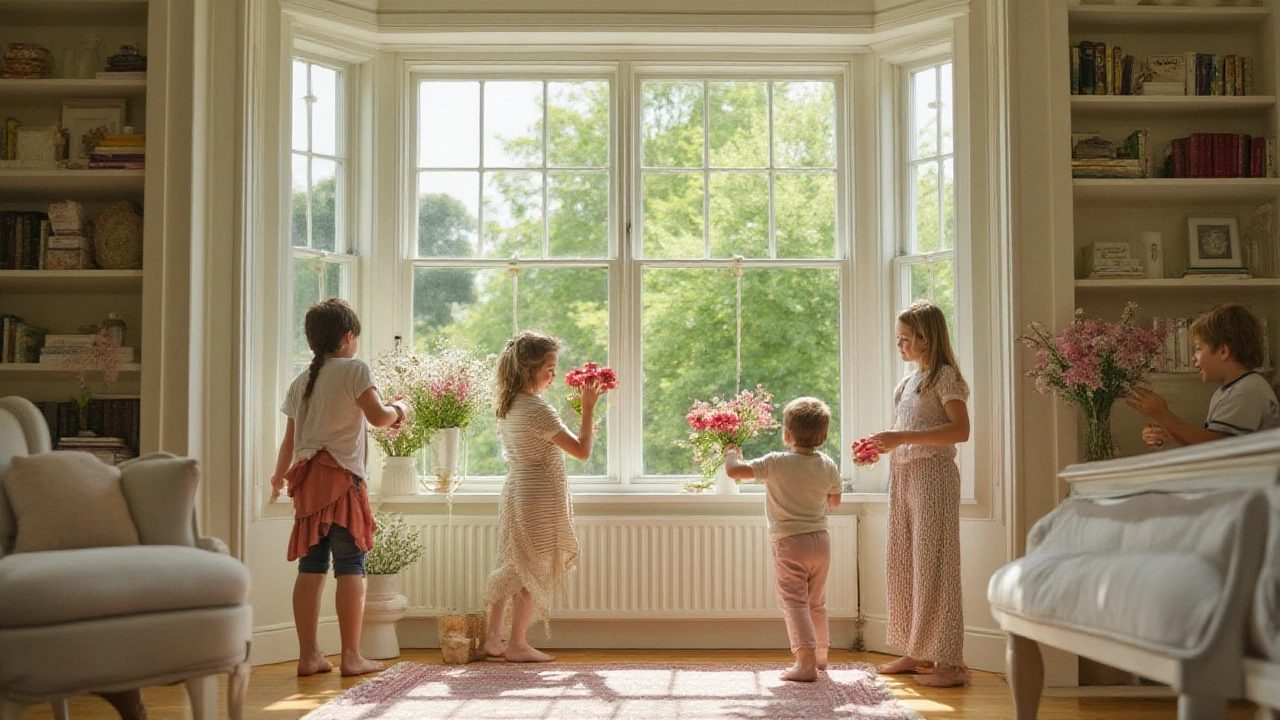The phrase “spring cleaning” probably makes you picture flinging open the windows, shaking out dusty rugs, and filling trash bags as if you’re filming your own home makeover show. But is this age-old ritual still going strong in 2025? Numbers don’t lie—just last year, a survey by the Cleaning Institute revealed that roughly 78% of Americans planned a dedicated spring clean. That’s not a tiny slice of the pie; it’s the kitchen table, chairs, and everything else.
The Staying Power of Spring Cleaning
Why does this seasonal ritual refuse to fade away? Part of it is hardwired nostalgia—people love traditions that connect them to family stories. For centuries, folks shook off the literal and mental dust of winter. But let’s get real, it’s not just romantic memory. Modern life gives spring cleaning a technical boost: we’ve got super-powered vacuums, fancy microfiber cloths, and cleaning robots for floors and windows (which might just make your own mop feel ancient). In the 2020s, DIY cleaning content exploded online—YouTube, TikTok, even podcasts full of cleaning hacks. Experts like Melissa Maker and cleanfluencers such as KC Davis gather millions of fans hungry for dust-busting tips, so the spirit of spring cleaning becomes viral—and not in the germ sense.
Another reason it’s booming? Post-pandemic habits. Everyone started rethinking hygiene and what a “clean house” means. Wiping doorknobs and sanitizing remotes, which were once the butt of jokes, became the new norm. Market analysts at Statista show the cleaning products industry growing 4% a year since 2020. There’s even a peak in sales each March and April—right on cue for spring cleaning. The tradition isn’t just living, it’s thriving, thanks in part to a culture that now prizes visible cleanliness.
But let’s not pretend it’s only about germs and old habits. For a lot of people, spring cleaning is tied to something deeper. There’s science behind that boost when you finally see the bottom of the laundry basket. A 2024 Drexel University study tied decluttering to better mood scores—even reporting dips in mild anxiety and improved sleep for some. Home organizers like Marie Kondo may be less mainstream now, but their impact stuck: people crave clean, uncluttered space, and spring is a natural time to reset. In fact, Google Trends shows spikes for “how to declutter” each March without fail. That’s no accident—it’s a worldwide itch that begs for a scratch.
Spring cleaning even motivates people to reconnect—with themselves, with old boxes in the attic, and sometimes with neighbors during the process. Block-wide cleanout days or neighborhood yard sales often follow spring cleaning. In my own neighborhood, we trade advice: which eco soap works, who loaned the power washer last, and if Mr. Ellerby’s garage is finally walkable. It’s a shared project, not a lonely chore.

What Gets Cleaned—and What’s New in 2025?
So what actually makes the “spring cleaning” list nowadays? Traditionally, it’s that deep stuff you skip the rest of the year: scrubbing baseboards, washing windows inside and out, airing out mattresses, shampooing carpets, and basically tackling everything that gathers more than a month of dust. But now the checklist reflects modern life. Last spring, an Ipsos poll found smartphones, laptops, VR headsets, and even smart speakers moving onto the must-clean list. It feels only fair—those gadgets see more use than your guest towels.
There’s a definite eco twist this year. With climate headlines everywhere, people don’t just want a fresh-smelling home—they want solutions that are safe for the planet. Homemade cleaners made from vinegar, baking soda, and lemon juice have jumped 17% in search popularity since 2023, according to Google. Reusable cloths and mop heads are replacing the endless parade of paper towels. Composting bins get a workout post-clean-out, and local swap groups (digital or in-person) help keep old clothes or toys from heading to the landfill. Even big cleaning brands now push plant-based bottles and say no to artificial scents—proof that priorities have shifted.
But let’s not make it sound all virtuous. Tech plays a huge role too. Smart home cleaning robots, like the latest Roombas and window washers, became bestsellers this spring. They don’t replace humans—at least not yet—but they free up your hands for the fiddly bits. And if you ask around, lots of folks now put organizing digital files (yep, decluttering laptops and cloud storage) on their annual spring clean. Digital overload, it turns out, is just as annoying as dust bunnies under the couch.
Another twist? Professional help. Home cleaning services reported a 23% spike in bookings for deep cleans in April 2024, according to Thumbtack data. People seem more willing to split the job instead of slogging through it. That’s not lazy—it’s pragmatic. When half your weekend disappears to kid sports or work emails, outsourcing the mess makes sense. And companies now offer eco packages, allergy-friendly options, and even app-based booking to fit jam-packed lives.
Here’s what most people still focus on, organized as a real-life checklist—not some idealized magazine fantasy:
- Flip and vacuum mattresses
- Wash pillows (yes, even the fancy ones)
- Clean out the fridge, tossing expired sauces
- Scrub baseboards and behind large appliances
- Declutter drawers, closets, and toy bins
- Wash windows and sills, inside and out
- Organize digital files, emails, and photos
- Disinfect doorknobs, remotes, light switches
- Polish furniture and vacuum under rugs
- Donate, recycle, or swap unused clothes and gadgets
This isn’t just an excuse to buy fresh decor (though, hey, if a new plant keeps you sane, go for it). It’s about feeling in control in an out-of-control world. That’s timeless.

Tips For Actually Getting It Done (Without Losing Your Mind)
Saying you’ll spring clean is like planning to run a marathon—sounds good in theory, but where do you find the time? Luckily, a few tricks make it less painful and more productive. First, don’t treat spring cleaning like a one-Saturday event. Most experts—and anyone with a busy life—recommend spreading it over a few weekends. Break down tasks by room or category. Instead of “clean the house,” try “focus on the kitchen” or “sort my closet.” Mixing physical stuff with digital decluttering (half an hour on email, an hour on the pantry) keeps you motivated and might cut back on decision fatigue.
If you’re sharing your home, delegate. No one should be stuck scrubbing grout while everyone else lounges. Kids can handle dusting baseboards or sorting socks, and many adults don’t mind swapping an hour of window washing for a week’s worth of coffee runs. Turn tasks into a playlist-powered challenge or, if you’re feeling competitive, see who can fill a trash bag first. Make it less painful—some families or friend groups even livestream their efforts for accountability (and laughs) on social media. Not as weird as it sounds when you see others racing to deep clean alongside you.
For the perfectionists: don’t get stuck in the weeds. If you wait to tackle every tiny repair, you’ll burn out. Focus on big-impact stuff first—declutter visible areas, dust, vacuum. Save detail work for next month or when energy returns. It’s also smart to stock up on essentials before you start: cleaners, gloves, sponges, and trash bags. Nothing wrecks your momentum like running out of supplies just as you’re on a roll.
More people lean on tech for motivation. Apps like Tody turn cleaning into a game, setting reminders and checklists with satisfying progress bars. YouTube’s endless stream of “clean with me” videos lets you swipe inspiration, and dozens of smart speakers now give daily cleaning tips if you ask. Some folks even schedule a pro cleaning service for the finish line, so they handle the basics and let someone else tackle the trickiest parts like oven or carpet deep cleans.
If you’re worried about keeping things green, DIY recipes are your secret weapon. For example, mixing equal parts vinegar and water with a splash of lemon makes a killer surface wash for kitchens and baths. For carpets, sprinkle baking soda before vacuuming for fresher smells. If you must use commercial cleaners, look for phrases like “biodegradable” or “plant-based”—not just “natural,” which is basically marketing fluff.
Finally, don’t forget the reward. Plan a pizza night, a quiet day with zero chores, or even a small splurge (like that new lamp you’ve eyed). Psychologists say rewards turn drudgery into habit-forming action. Your mental health will thank you, and your home will feel brand new—at least until next spring.
So, is spring cleaning still a thing? Absolutely. It isn’t just a quirky old ritual; it’s proven itself as the go-to reset for millions, with more people embracing deep home cleaning now than in decades. Maybe it’s tradition, maybe it’s stress relief, or maybe it’s just a chance to see your floors for once. Either way, the numbers and enthusiasm say it’s nowhere close to dying out. In 2025, your neighbors are cleaning—and whether you join them or just take notes, the trend is as strong as ever.
